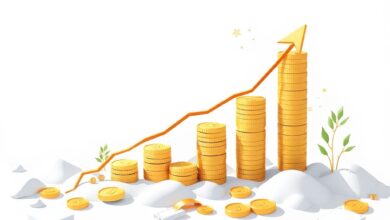Top 5 mobile apps for personal finance and investing

Consider utilizing Mint for effortless tracking of your expenses and creating a robust budget. This tool aggregates all your financial accounts in one place, providing a clear overview of your spending habits. You can set goals, categorize transactions, and even receive alerts when you exceed certain limits.
For those looking to grow their wealth, Robinhood stands out as an intuitive platform for buying and selling stocks without commission fees. It simplifies the process of investing by offering a user-friendly interface that appeals to both novices and seasoned investors alike.
YNAB (You Need A Budget) is another powerful resource that encourages proactive money management. Its unique approach focuses on giving every dollar a job, promoting responsible budgeting while preparing users for future expenses. This mindset shift can lead to long-term financial stability.
If you’re interested in retirement planning, Acorns allows you to invest spare change automatically from everyday purchases. It’s an excellent way to start investing without feeling overwhelmed by large sums or complex strategies.
The combination of these innovative tools can significantly enhance your financial journey, making budgeting less daunting and investing more accessible than ever before.
Track Your Spending Easily
Utilize finance tools designed to simplify budget tracking. Here are some recommendations:
- Mint: Automatically syncs with bank accounts, categorizes transactions, and provides spending insights.
- You Need A Budget (YNAB): Encourages proactive budgeting by allocating every dollar. Ideal for those wanting to take control of their finances.
- Personal Capital: Combines budgeting with investment tracking, helping users understand overall financial health.
- EveryDollar: Straightforward interface for zero-based budgeting. Quickly categorize expenses and monitor cash flow.
These tools not only help in monitoring expenses but also assist in identifying spending patterns. Establishing clear categories allows for better decision-making regarding savings and investments.
- Create Categories: Define areas like groceries, entertainment, and utilities.
- Set Limits: Assign budget limits to each category to avoid overspending.
- Review Regularly: Weekly or monthly check-ins can highlight trends and necessary adjustments.
The integration of these tools can significantly enhance financial literacy and discipline. By actively engaging with your budget, investing becomes more strategic and informed.
Budgeting Tools for Everyone
YNAB (You Need A Budget) stands out as a leading choice for those aiming to take control of their finances. This tool encourages proactive budgeting, allowing users to allocate every dollar they earn to specific expenses, savings, or investments. It focuses on helping individuals break the paycheck-to-paycheck cycle by promoting forward-thinking strategies.
Mint offers an intuitive way to manage and track budgets seamlessly. Users can connect their bank accounts, credit cards, and investment portfolios to gain a comprehensive view of their financial situation. Mint categorizes transactions automatically, making it easy to see where money is spent each month.
EveryDollar utilizes a zero-based budgeting approach, enabling users to plan their expenditures down to the last cent. Its simple interface allows for quick entry of income and expenses, ensuring that users stay on top of their financial goals without unnecessary complexity.
GoodBudget employs the envelope method digitally, allowing users to create envelopes for different spending categories. This classic technique is effective for maintaining discipline in spending habits while visually tracking the remaining budget in each category.
PocketGuard simplifies budgeting by focusing on what users can spend after accounting for bills, goals, and necessities. Its “In My Pocket” feature provides clarity on available funds, making it easier to avoid overspending while still enjoying life.
Selecting the right tools tailored to individual needs enhances financial awareness and fosters better money management practices. Experimenting with various platforms can lead to discovering which one aligns best with personal preferences and lifestyle requirements.
Investing Platforms to Consider
Robinhood stands out for its commission-free trading model, allowing users to buy and sell stocks without fees. This platform is user-friendly, making it ideal for newcomers. It also offers cryptocurrency trading, expanding investment options beyond traditional assets.
E*TRADE provides a robust selection of tools for both novice and experienced traders. With advanced charting features and educational resources, it caters to various investment strategies. The mobile interface enhances accessibility, letting users manage their portfolios on the go.
Fidelity emphasizes research and analysis, offering extensive market insights. Their Zero Expense Ratio Index Funds are particularly appealing for budget-conscious investors seeking diversification without high costs. The app’s intuitive design simplifies tracking investments.
Acorns automates investing by rounding up purchases and investing spare change. It’s perfect for those who prefer a hands-off approach while building savings over time. Users can choose from different investment portfolios based on risk tolerance.
Wealthfront targets individuals interested in robo-advisory services. Utilizing algorithms to create personalized investment strategies, it streamlines the finance management process. Tax-loss harvesting features further optimize returns.
Merrill Edge integrates seamlessly with Bank of America accounts, providing rewards for banking customers who trade. Its research tools and educational content are beneficial for those looking to enhance their financial literacy while managing investments.
Saving Strategies with Applications
Utilizing finance software can significantly enhance your saving methods. Consider using round-up features offered by various platforms. These tools automatically round up your purchases to the nearest dollar and transfer the difference into a savings account. This passive approach effectively boosts your savings without requiring conscious effort.
Another strategy involves setting specific savings goals within these tools. Many applications allow users to create personalized targets, whether it’s for an emergency fund, vacation, or a new gadget. By visualizing progress towards these objectives, you maintain motivation and encourage consistent contributions.
Explore automatic transfers as a powerful way to save money. Schedule weekly or monthly deductions from your checking account into a dedicated savings account. This technique ensures that you prioritize savings before spending on discretionary items.
Categorizing expenses can also lead to enhanced awareness of spending habits. Some programs provide insights into where your money goes each month, highlighting areas where reductions can be made. Identifying non-essential expenses creates opportunities for more substantial savings.
Incorporating cash-back options can further enhance your financial strategy. Use finance tools that offer rewards for purchases made through their networks, allowing you to earn back a percentage of what you spend while also saving.
Finally, leverage investment platforms that integrate with budgeting solutions. Investing small amounts regularly can increase your wealth over time while ensuring that you’re not neglecting your saving goals. Balancing immediate savings with long-term growth is key in achieving financial stability.







